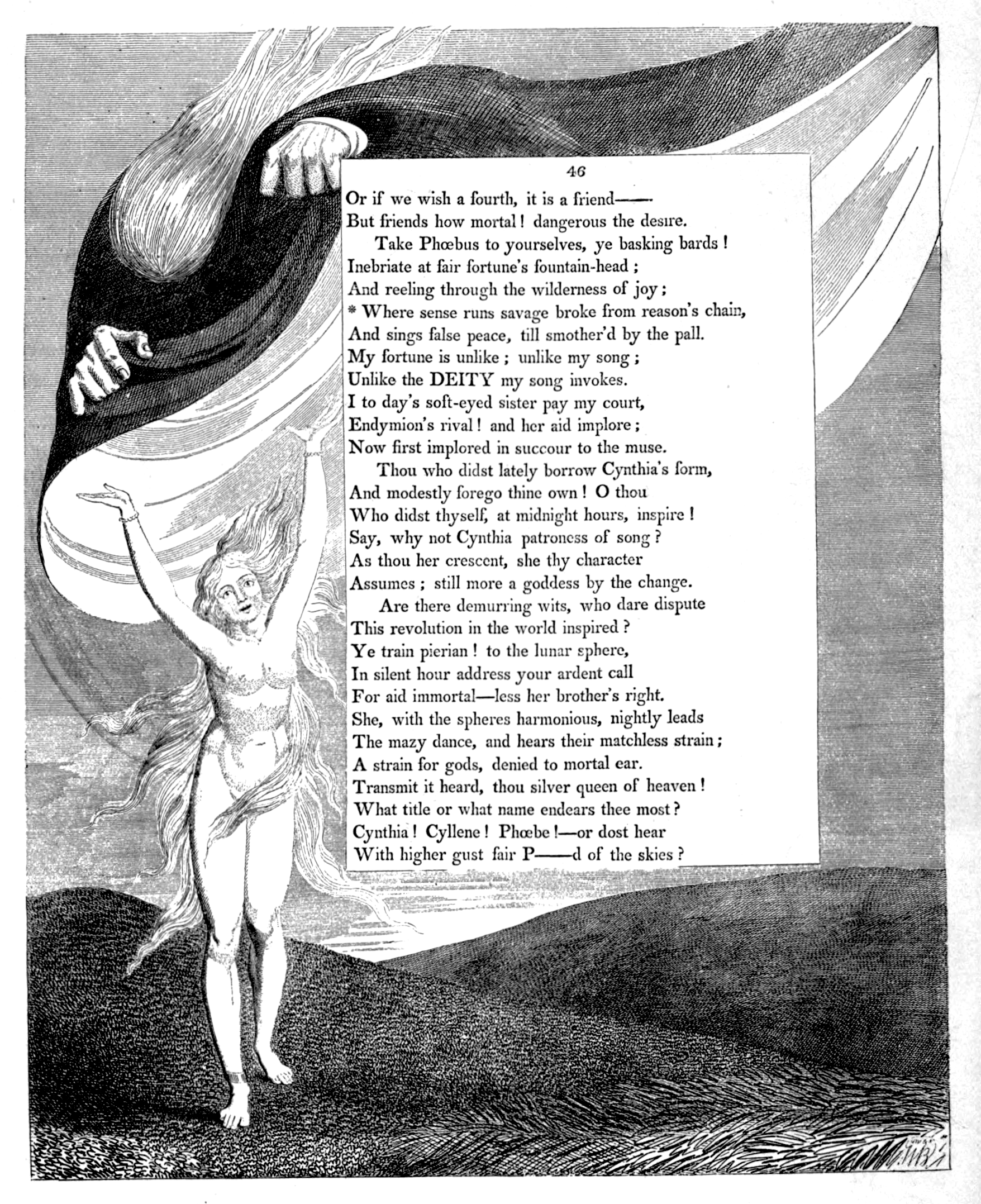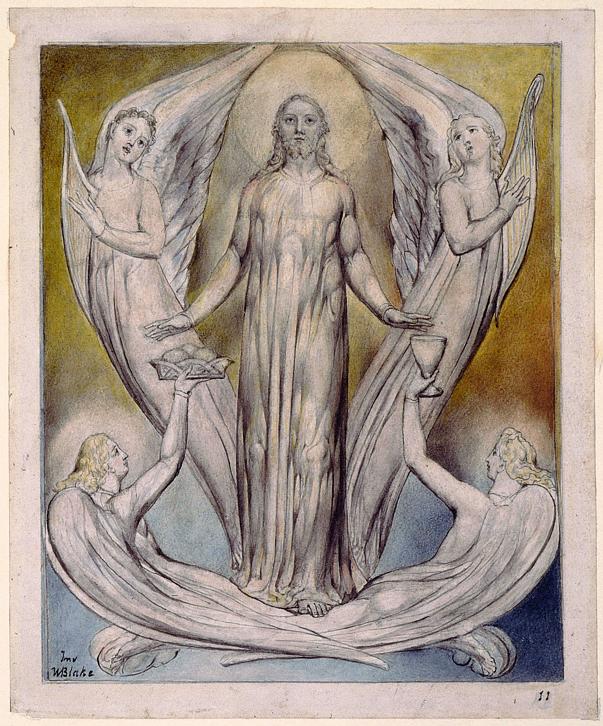"Mental Things are alone Real what is Calld Corporeal Nobody Knows
of its Dwelling Place
Imposture Where is the Existence Out of Mind or Thought Where is
it but in the Mind of a Fool."
Milton, Plate 36 (E 135)
"Thus are the Messengers dispatchd till they reach the Earth again
In the East Gate of Golgonooza, & the Twenty-eighth bright
Lark. met the Female Ololon descending into my Garden
Thus it appears to Mortal eyes & those of the Ulro Heavens
But not thus to Immortals, the Lark is a mighty, Angel.
For Ololon step'd into the Polypus within the Mundane Shell
They could not step into Vegetable Worlds without becoming
The enemies of Humanity except in a Female Form
And as One Female, Ololon and all its mighty Hosts
Appear'd: a Virgin of twelve years nor time nor space was
To the perception of the Virgin Ololon but as the
Flash of lightning but more quick the Virgin in my Garden
Before my Cottage stood for the Satanic Space is delusion"
Blake always asks us to go at least one step farther. If we reach the point where we can see the Lark as the messenger of Los, he wants us to see the Angelic presence in the Lark. And to see that the Lark is a delusion as is everything in our mind created world. He would that we may see as 'the flash of lightening.'
I think that he means that we have access to the phenomenal world through our mental images. Our senses provide input from the exterior, but mental processing creates the image we form. If we think that what we sense is reality we are delusional.
Concerning Blake's poem 'To Tirzah' from Songs of Experience, Damon (William Blake: His Philosophy and Symbols, Page 281) writes:
"Blake undoubtedly wrote this poem when trying to interpret the unfilial remark of the child Jesus in the Temple: 'Woman, what have I to do with thee?' (John ii. 4). Blake's conclusion was that Jesus was interrupted in his consideration of spiritual matters by the intrusion of her who bound him to the corporeal world. This is the case with every man. For the mortal body is of the earth, and will return to it, a temporary delusion; the true body is the spiritual body: a distinction made by Paul (I Cor. xv. 44 - which is quoted by Blake in the marginal decorations to this poem)."
If Blake sees all life in this world as a temporary delusion, the Lark too is part of this delusion. The Angel is from Eternity, so has another level of existence, but is only a carrier of the message.
Although Blake believed that 'every thing that lives is Holy', the holiness comes from the Eternal nature not from the temporal or perishable nature.
The point is that Blake's sentence "The Lark is a Mighty Angel", points beyond the Lark to the Angel, its identity in Eternity. But that isn't the end of the chain of reference. The answer to every question is another question. We are finite, we cannot grasp the Infinite. But we can continue to approach. If we stop at the Lark or the Angel we miss what lies beyond.
Image to Mortal Eyes
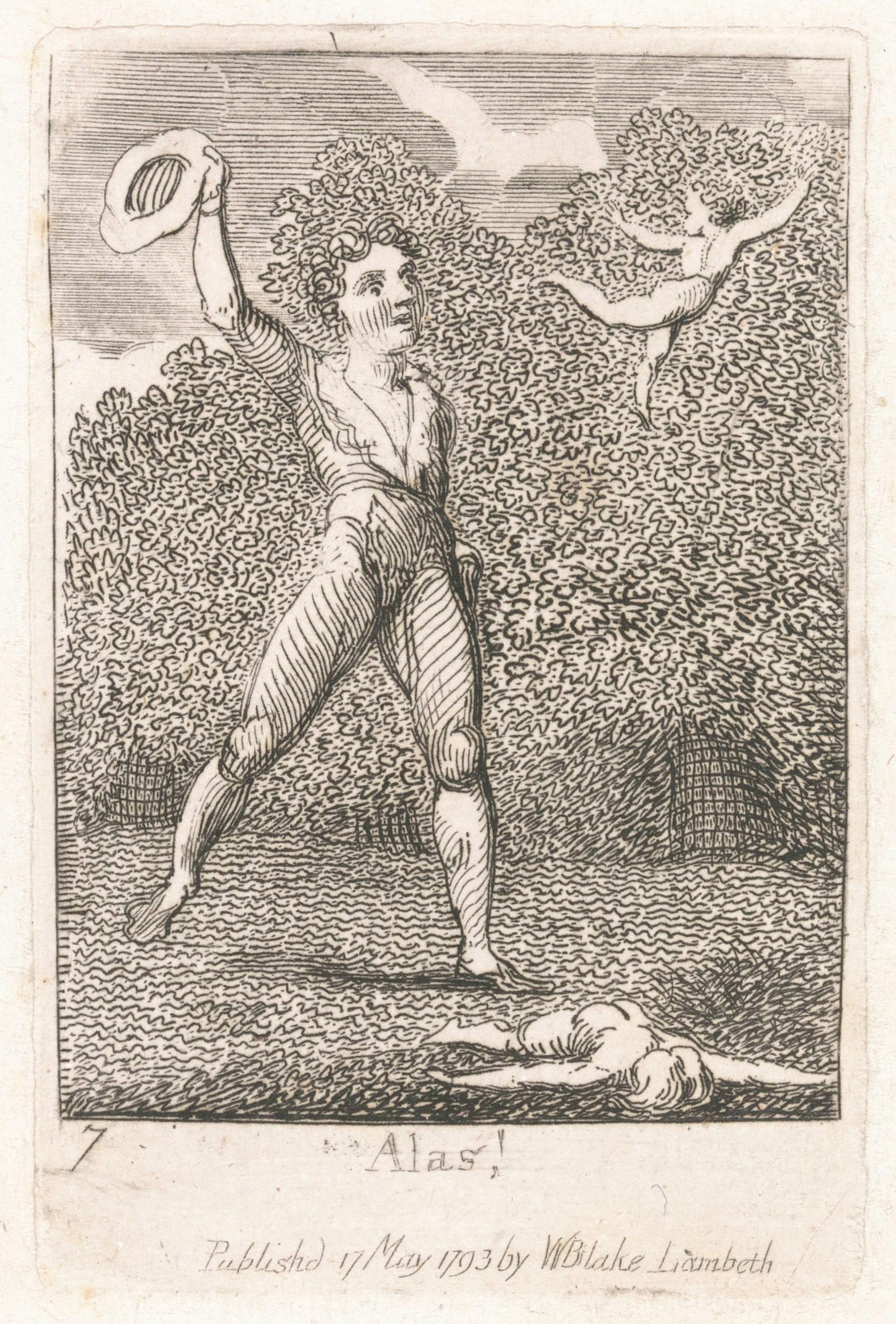
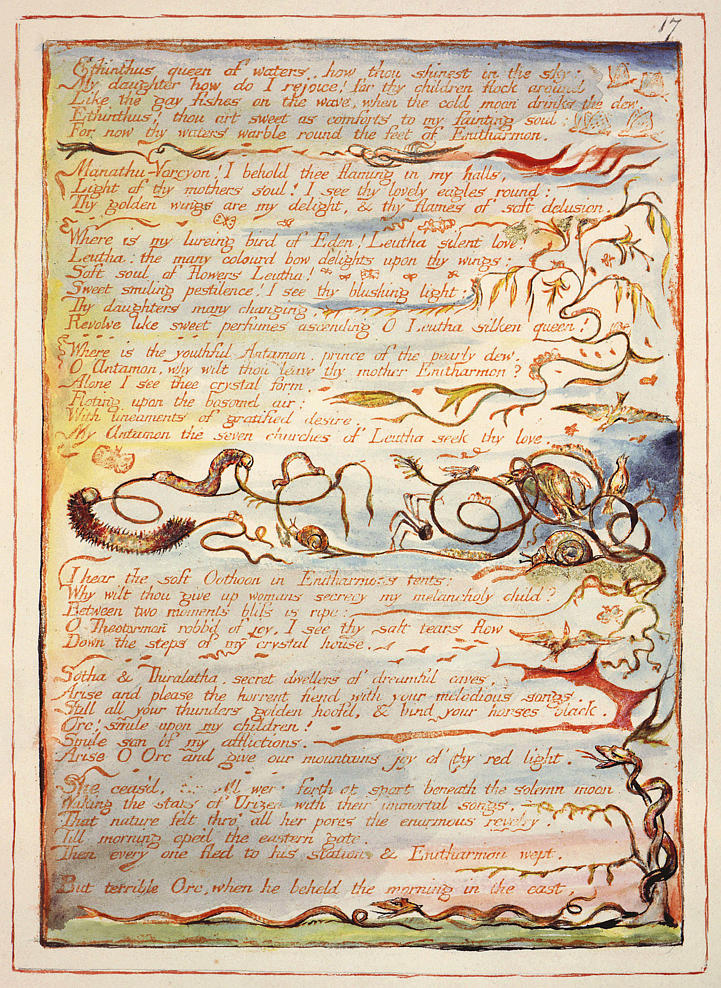




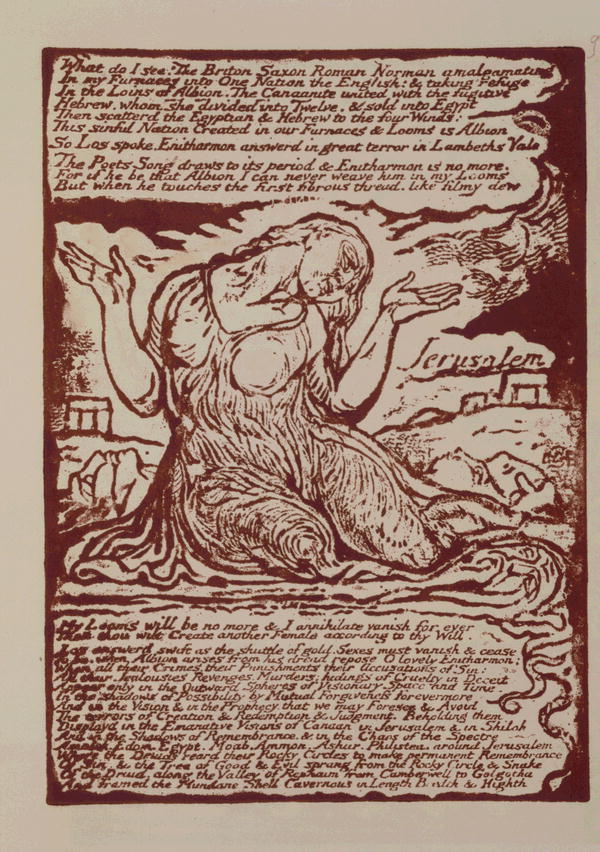

.jpg)


